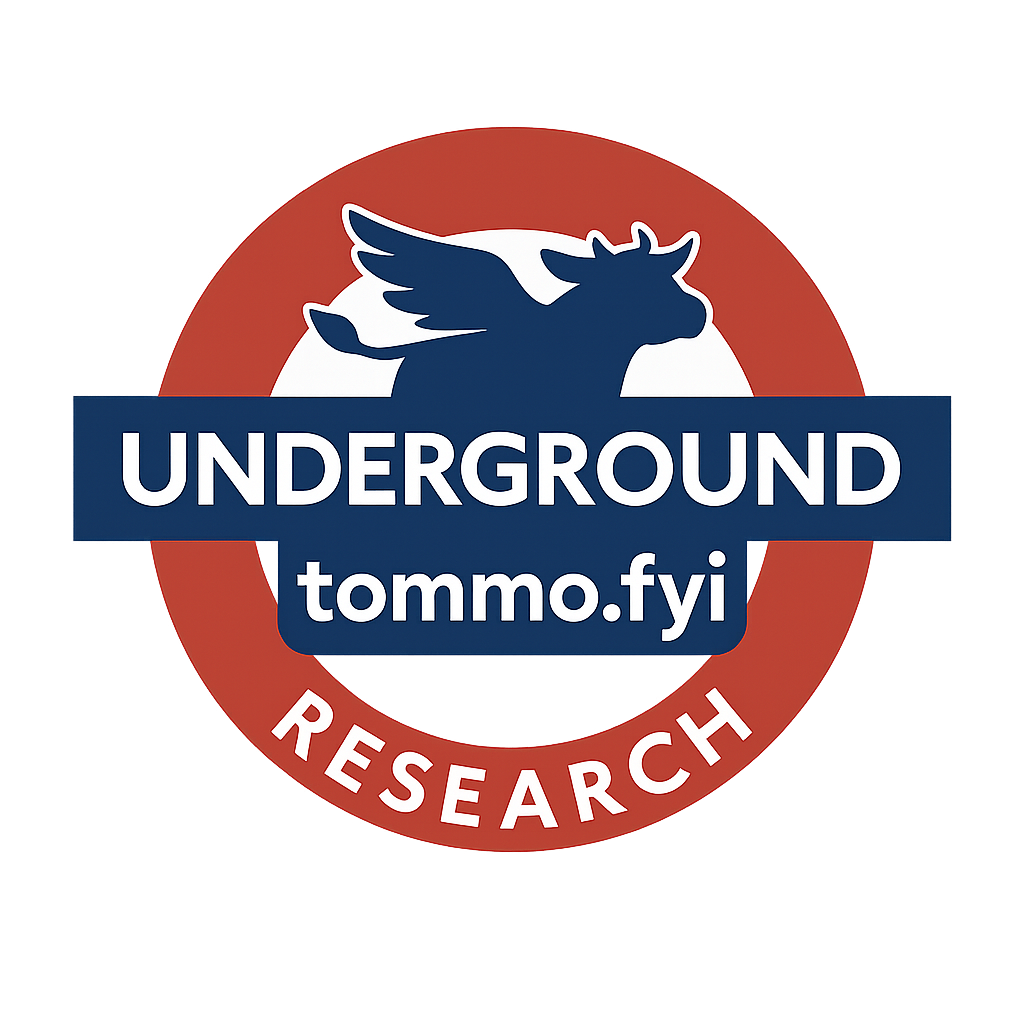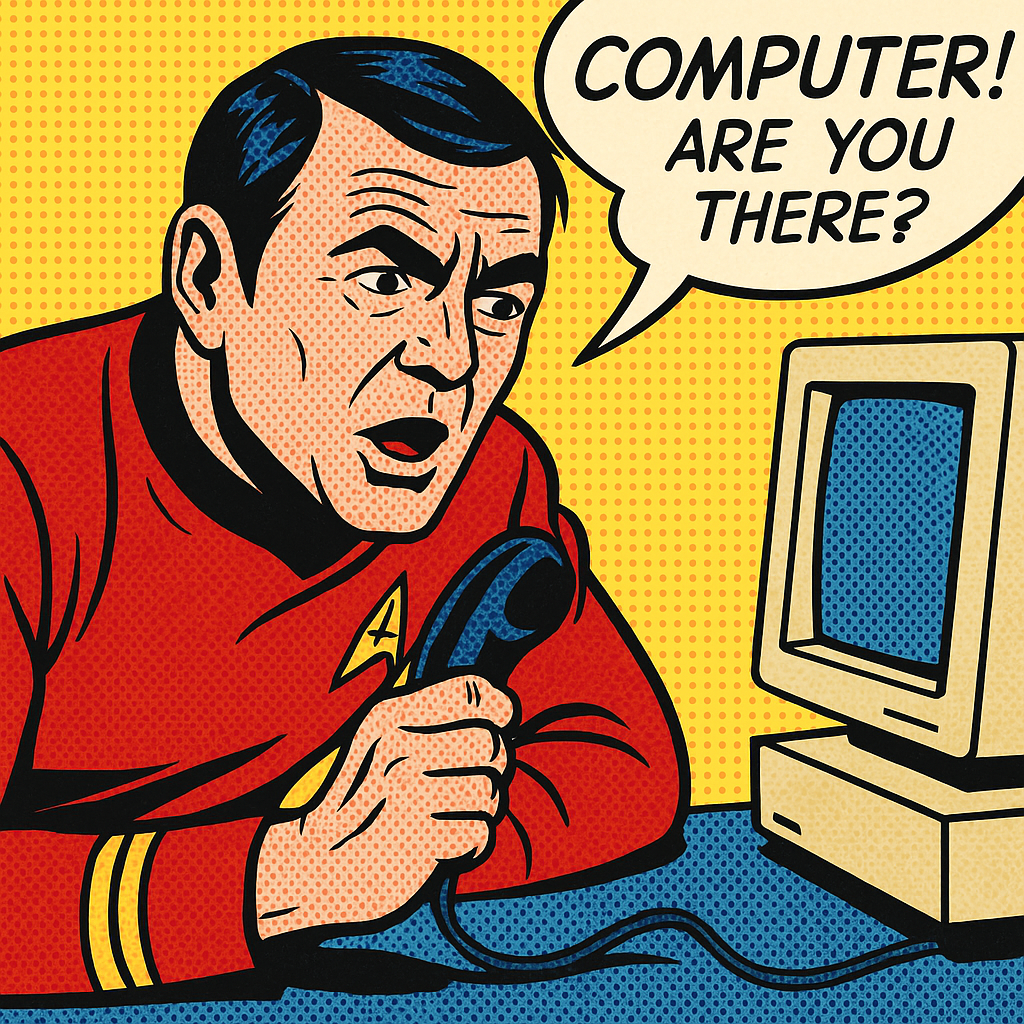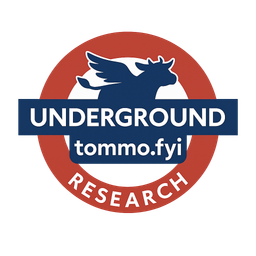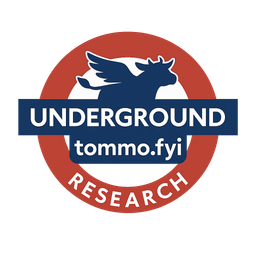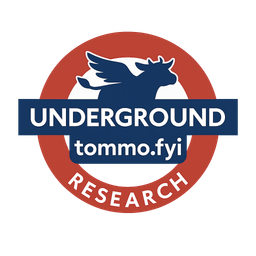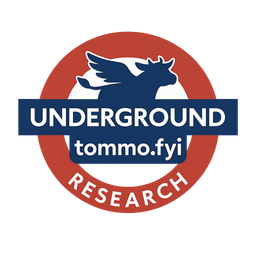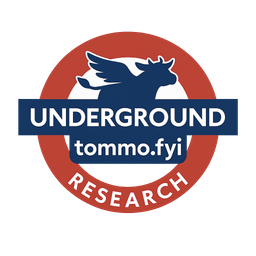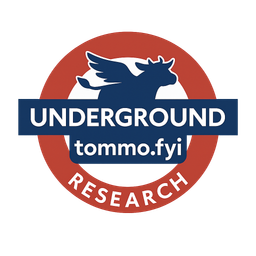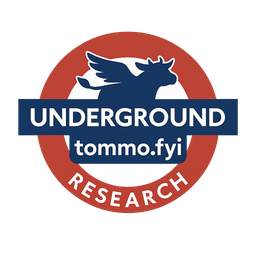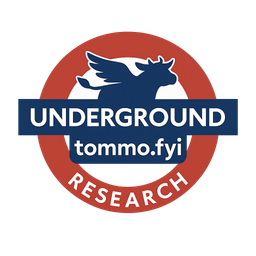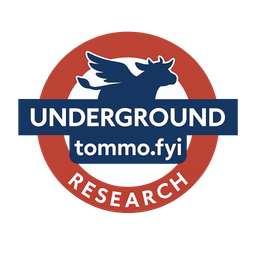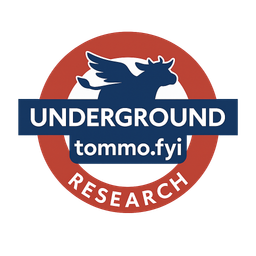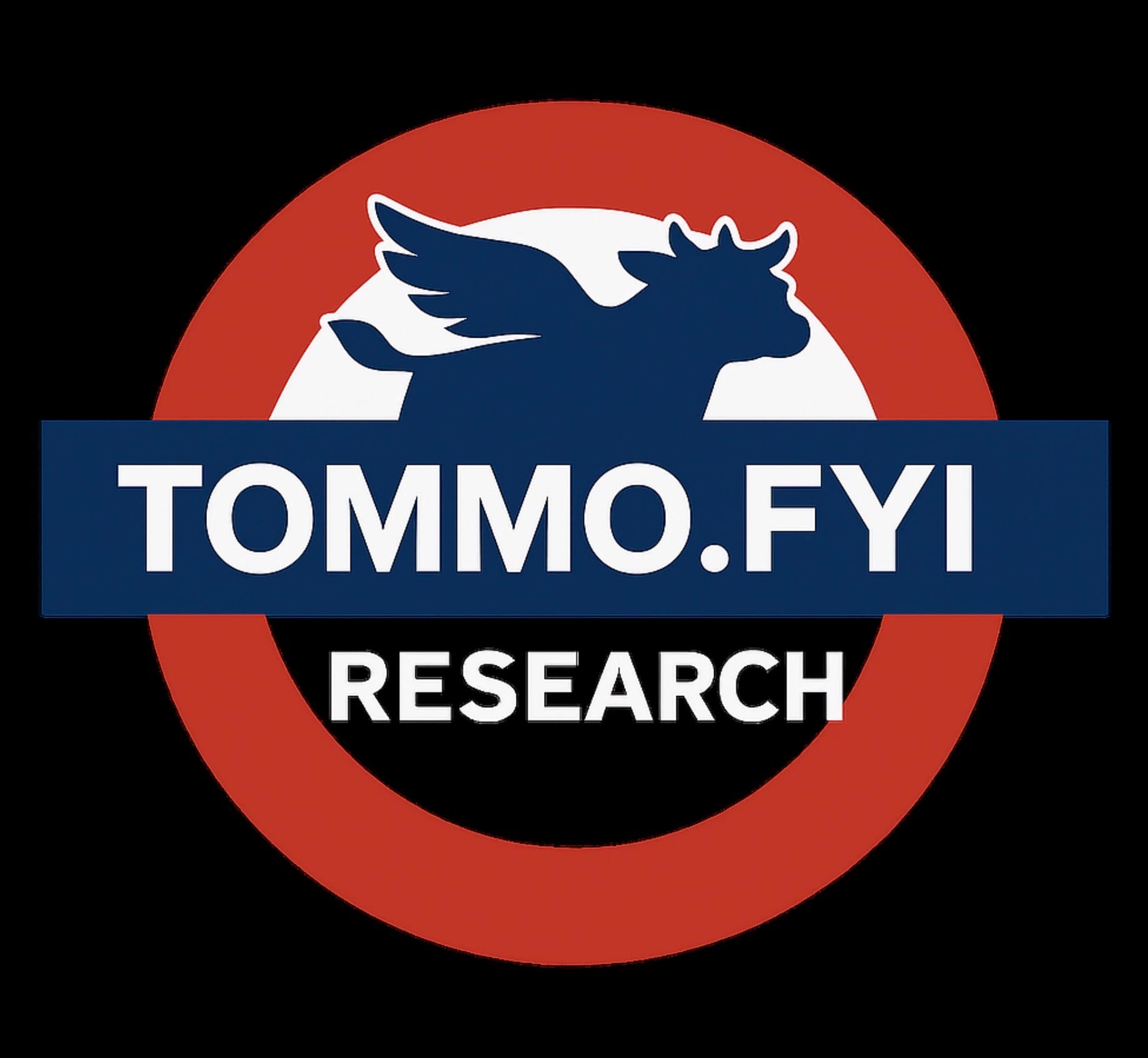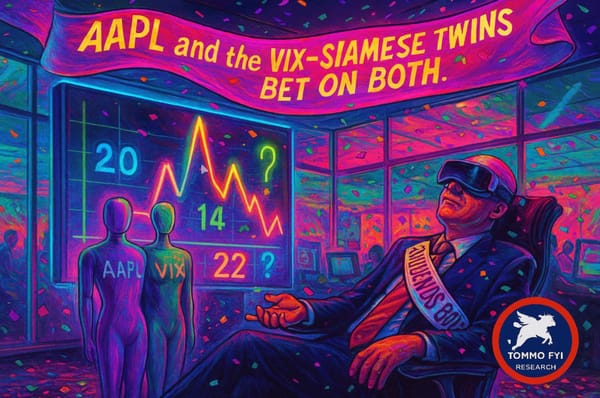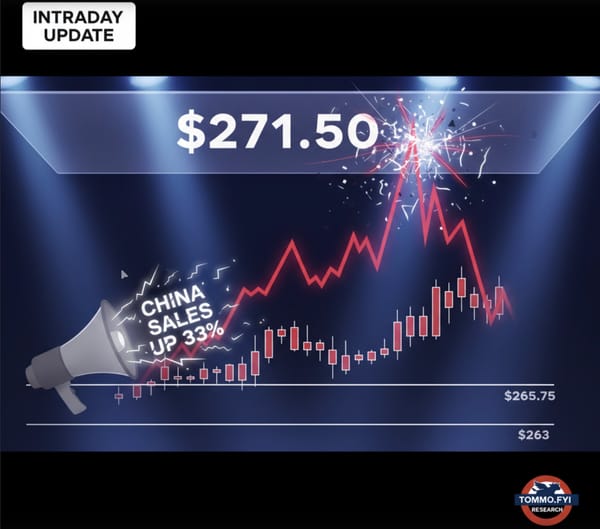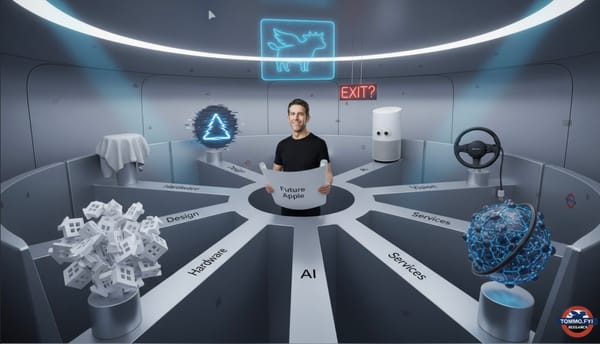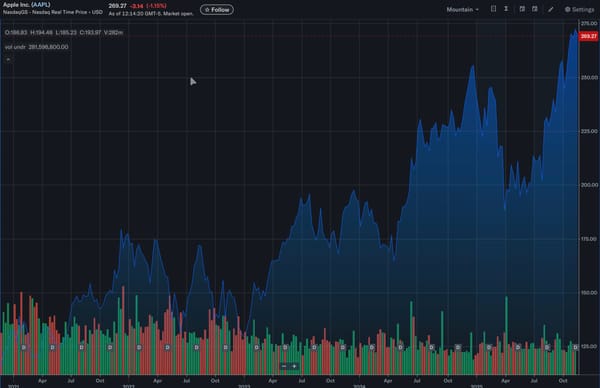From FAANG to MANGO: Apple’s Chance to Think Different Again: Its Next Big Move to $400 Isn’t based on Hardware, But Culture.
Apple’s ATH of $263 isn’t just a milestone but an epiphany. After a decade of iteration, the company’s next act won’t be defined by chips or devices, but the culture it chooses to rebuild. FAANG was about products; MANGO? Cognition. Can Apple still “Think Different,” and fix its stifling culture?

From FAANG to MANGO: Apple’s Chance to Think Different Again — Its Next Big Move Isn’t Hardware, It’s Culture.
Key Points in this article, by section: - how AAPL can still hit $400 by Q4 2027 according to my long-standing math.
• Prologue — From “Risky Business” to Reward. Last piece framed the risk; this one argues the reward: Apple’s next big product isn’t hardware—it’s culture.
• Part I — Departures as Diagnostics. The recent AI/Siri leadership exits aren’t defections; they’re symptoms. What left, why it mattered, and what the pattern says.
• Part II — Jobs’ Portability → M1 Momentum. How OS X’s architecture and Cook’s Apple Silicon bet created miracles—then masked a cultural stall.
• Part III — When Silicon Outruns the Soul: AVP, Siri, Home/AI: where compute is abundant but collaboration, agency, and parallelism aren’t.
• Part IV — Ship Culture Like You Ship Chips: A design spec for Apple’s “culture stack”: parallel builds, faster merges, visible wins, talent flywheel.
• Part V — The $400 Path by Q4 2027: (What Has to Go Right) Services ARPU, margin leverage, platform effects, and buybacks—plus the few pivotal risks to watch.
• Part VI — From FAANG to MANGO → “MAANGO”
TL;DR: Silicon without culture is physics; culture without silicon is philosophy. Re-fuse them, and Apple leads the MAANGO era — and can plausibly reach $400 by 2027.
Subscribe for free by accepting early Founder Member access to this tier — and early beta access the moment it goes live.
Prologue — The Follow-Through
Saturday’s piece, Risky Business, ended with a question: can Apple still take the corner at speed, or has it become the world’s most valuable car in cruise control?

AAPL Rose $8 on a content deal fantastic for broadcasting but zero ROI. Risk or Vanity?
On Saturday I asked whether Apple can still take the corner at speed or whether the world’s most valuable car has slipped into cruise control. Today is the follow-through. If Friday’s F1 deal was about spectacle, this is about substance. Apple’s next big product isn’t a device; it’s a development environment for people.
Ship culture like it shipped silicon, and $400 by 2027 is math not hopium.
This is the promised continuation — the next lap.
Apple just clocked a new all-time high at $262 after two sessions of euphoric buying.
The headlines say “demand,” the market says “belief.” But what they really measure is muscle memory — the reflexive confidence that Apple always finds its way back to the front of the pack. And maybe it will.
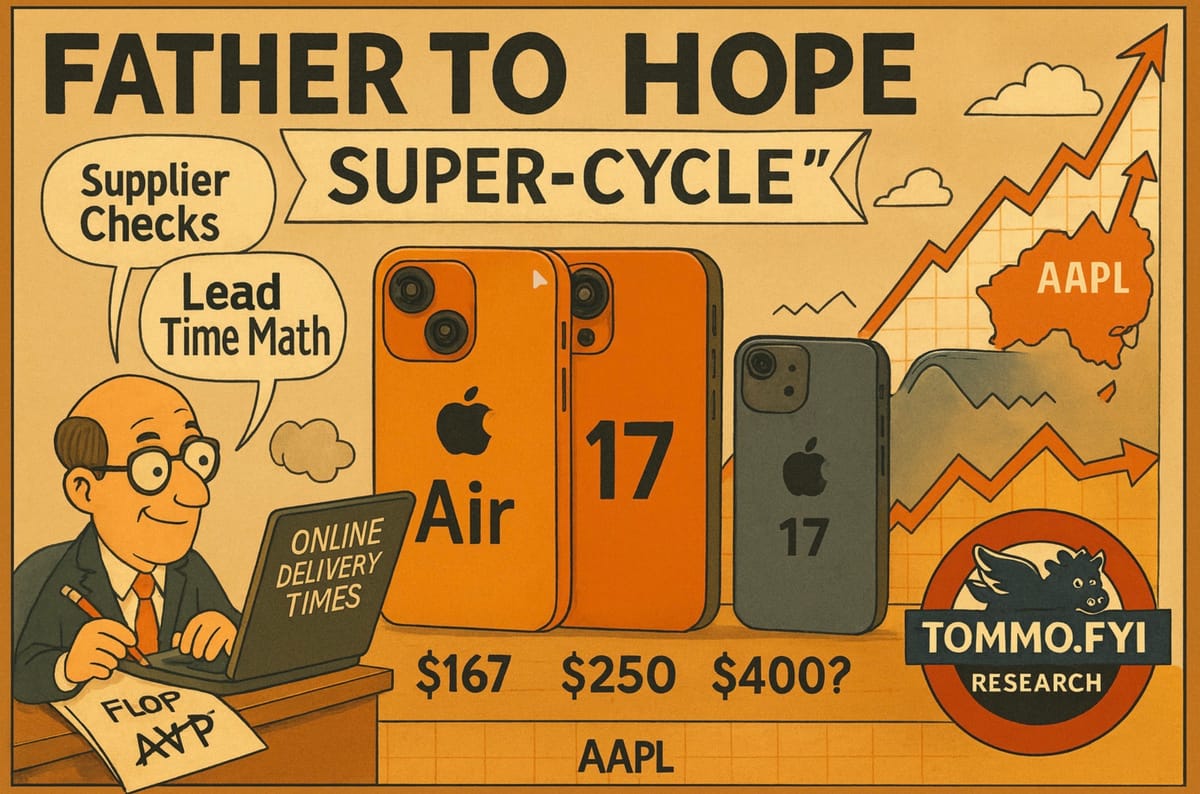
Chinese Subsidies of $300, T-Mobile giving away iPhone 17’s, and a comparable with the iPhone 16 launch which makes YoY comparably of anything less than 15-20% not a reason to celebrate, but to breath a sign of relief the plateau of 16 sales has been overcome.
Because beneath the noise, this rally is also a signal: that the world still expects Apple to lead again, not just iterate. The question now isn’t whether Apple can keep selling iPhones — it’s whether it can still invent the future that makes those phones matter, while still just pretending recovering from a dead year, and a dead stock, is a reason for an ATH, when the company is several years behind its key product roll-outs.
Risky Business - part one - was about the risk.
This article, it’s followe up, is not about the euphoria over “unprecedented iPhone demand” when it’s comparing that demand to one of the worst years in Apple’s recent history:
It’s about the possibility of reward — and the one resource Apple still controls that could decide everything: its culture.
The Lost Firmware
Axios’ MANGO Markets feature last month wasn’t about Apple directly. It was about a shift in power — the passing of the “FAANG” torch from social and ad platforms to the new generation of agency-driven firms: Microsoft, Apple, Nvidia, Google, and OpenAI.
Click to read over at: MANGO is the new FANG

The old acronym sold attention; the new one sells autonomy.
And yet, the irony is that the company most responsible for inspiring that shift — Apple — is the one struggling hardest to live up to it internally.
Axios went on to say:
Over the years, acronyms have come and gone to describe America’s tech darlings — the companies college grads dream of joining and Wall Street investors love to watch.
- First, it was FAANG: Facebook, Amazon, Apple, Netflix and Google.
- Then came the Magnificent Seven.
- Now, in the age of generative AI, a new term is taking hold: MANGO — Microsoft, Anthropic, Nvidia, Google DeepMind and OpenAI.
Why it matters:
It’s a reflection of the moment. The companies commanding attention today are the ones leading the AI revolution.
The Departed (earlier years)
Bill Stasior, the former head of Apple's Siri division, left the company after nearly a decade to join Microsoft's artificial intelligence division. (2019 )- just when Apple cancelled Project Blackbird, and Microsoft were designing Co-Pilot (2019)
- Ian Goodfellow, Apple’s Director of Machine Learning, left for DeepMind after warning about a “culture that punishes initiative.” (2022)
The 2025 mass-exodus
July
- Spas Lazarov, Apple's former director of data center engineering, joined OpenAI as a technical staff member in July 2025. Lazarov had spent nearly 11 years overseeing Apple's data center operations in North America, Europe, and Asia.
- Ruoming Pang, Apple's top executive in charge of artificial intelligence models, left the company for Meta Platforms in July 2025. The departure is considered a significant setback for Apple's AI efforts, which are reportedly struggling to catch up with competitors. About Ruoming Pang's departure
Role at Apple: Pang managed Apple's foundation models team, which consisted of around 100 employees. The team worked on the large language models used for Apple Intelligence features, including email summaries, Priority Notifications, and Genmoji.
Move to Meta: At Meta, Pang joined a new division called "Superintelligence Labs". Reports indicate that Meta lured Pang with an annual compensation package worth tens of millions of dollars.
Impact on Apple: According to reports from Bloomberg, Pang's departure led to internal scrutiny and low morale within Apple's AI teams. It has also fueled speculation that Apple may increasingly rely on external AI technology from partners like OpenAI or Anthropic, potentially sidelining its internal models.
Other departures
- Other researchers: Approximately a dozen AI and machine-learning team members from the Apple Foundation Models group have departed in 2025.
- Some senior researchers, such as Chong Wang, also joined Meta.
- Other researchers moved to companies like OpenAI and Anthropic.
August
- Frank Chu: A senior leader on Apple's AI team, who also led search-related AI groups, was hired by Meta.
September
- Jian Zhang: Apple's lead AI researcher for robotics left for Meta's Reality Labs Robotics Studio on September 2.
- John Peebles: An AI researcher from Apple's Foundation Models team joined OpenAI.
- Nan Du: Another AI researcher from the Foundation Models team also left for OpenAI.
- Zhao Meng: An AI researcher from the Foundation Models team departed to join Anthropic.
October
- Ke Yang, Siri’s Answering Machine lead, Head of “Answers, Knowledge and Information” (AKI) / AI Search Left October 15 2025 for Meta Platforms — AI Search tea departed this summer after the latest internal rewrite collapsed under its own technical debt.

More AI heads have voluntarily rolled at Apple than Dukes decapitated during the French Revolution. The newly-vaunted FrenchRepublic took several hundred years to recover, and decades of the rise of mini subtypes and incompetent leaders. Culture clash anyone?
- Salakhutdinov, once Apple’s AI research head, moved on. A well-known figure in machine learning, he previously headed Apple's robotics and Al group, where he focused on autonomous systems
Even John Giannandrea’s deputies — the bridge between Apple’s AI promise and execution — have started peeling away, with several joining Meta’s fast-moving AI research unit.
Individually, these losses can be rationalised.
Collectively, they form a pattern: people who were hired to innovate leaving because they weren’t allowed to.
Every time one of these names appears in the press, the commentary chorus follows the same script:
- They weren’t “Apple material.”
- They “weren’t a good cultural fit.”
- They “chose money over meaning.”
- “Good riddance to them. They didn’t deserve to work at Apple”
It’s a defensive reflex by people in love with their stock.
The same one that now defines Apple’s public image as much as its internal one. The problem, of course, isn’t that these engineers were misfits. It’s that the environment they entered had stopped rewarding the very behaviour that once made Apple formidable: curiosity, speed, and constructive dissent.
Most of these hires came to Apple on a promise:
To build something genuinely new inside a company that once made invention feel inevitable. But they discovered a different Apple: a corporate culture optimised for control over creation.
- The company that once broke rules now writes manuals.
- The company that once designed for chaos now designs for compliance.
- The company that once said “Real Artists Ship,” forget what to ship.
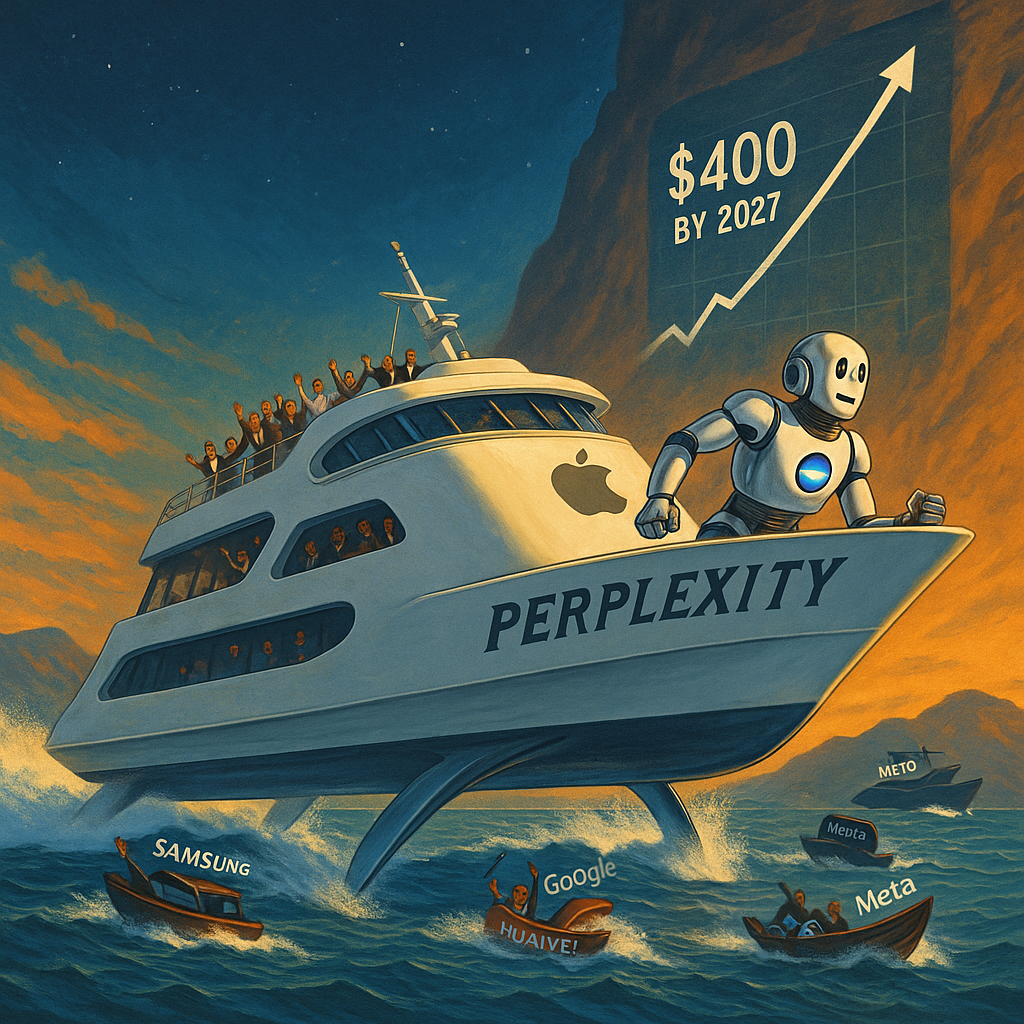
Steve Jobs once kicked ass to get his team to ship. Now the C-Suite are redirected to ask Siri for performance advice, and were sadly advised not to acquire Perplexity in June.
The result is a quiet, polite kind of entropy — a place where every new idea must find its sponsor before it can find its shape.
In a culture like that, even the brightest recruits start to dim.
If Apple Silicon was the miracle of engineering alignment — thousands of people, one purpose, one chip — then Apple Culture has become the opposite: thousands of people, one fear — of getting it wrong.
But hey, I have (surprisingly optimistic of late) commentary on this: it needn’t be terminal; it’s fixable, perhaps with regime change.
The same company that once proved the value of owning its own hardware stack can now prove the value of owning its own cultural one.
That begins by recognising that the departures aren’t defections; they’re diagnostics. Each one is a symptom of a system that needs a firmware update — not a public apology or a private disposal down the rubbish chute into the depths of the Death Star’s waste disposal system with a pink slip labelled “Going To Spend More Time With My Family.”
Section 2: The Exodus and the Echo Chamber
Every institution creates its own mythology.
Apple’s is purity through control: the idea that if you just polish long enough, everything imperfect will eventually shine. That philosophy built the iPhone. But it also built the glass walls of Apple Park — both literally and figuratively.
Inside those walls, dissent now travels slower than light.
The engineers leaving Apple aren’t leaving because they don’t “get” the culture; they’re leaving because they do — and because that culture no longer rewards deviation. When Bill Stasior departed, few outside the company noticed. When Ian Goodfellow walked out, it was spun as a minor loss. When Siri’s Answering Machine lead resigned this summer, the official story was that “teams are realigning.”
Realigning is a lovely euphemism for “trying not to admit we’ve lost another architect.”
And cue the latest investor and fan commentary chorus follows its own pattern of damage control.
- “Disloyal.”
- “Not Apple material.”
- “Couldn’t handle the pressure.”
But the truth is simpler — and more troubling.
Many of these engineers joined Apple precisely because they believed in the myth. They wanted to work inside the machine that made machines. They wanted to ship something that mattered. What they found instead was a culture where safety has replaced faith.
For a company that still quotes “Think Different,” and used English accents to promote a sense of gravitas in its CGI launches its own employees seemingly aren’t deemed fit to convey, Apple has become remarkably suspicious of difference itself.
The more its leadership speaks about “focus,” the more narrow that focus becomes — like a camera lens that zooms until the rest of the world blurs into irrelevance.
This echo chamber isn’t just emotional insulation; it’s structural. Apple’s organisational model — the famous functional hierarchy Jobs built to ensure accountability, and headed by a triumvirate of himself, Jony Ive, and Tim Cook — now works against the very agility it was designed to protect. What once allowed Apple to move fast with precision has become a form of bureaucratic compression. Every decision rises, waits, and descends. Creativity doesn’t flow through this system anymore; it queues.
And the C-suite fall outs are of epic proportions as senior execs don’t just fight turf wars but jealously try to ensure each iterative reorganisation benefits their department at the cost of someone else’s, creating disrutption, turmoil, delays, and plateauing morale. Vital decision are delayed, product launch windows missed, component supply chains left hanging, and orders put on hold, Everything grinds to a halt.
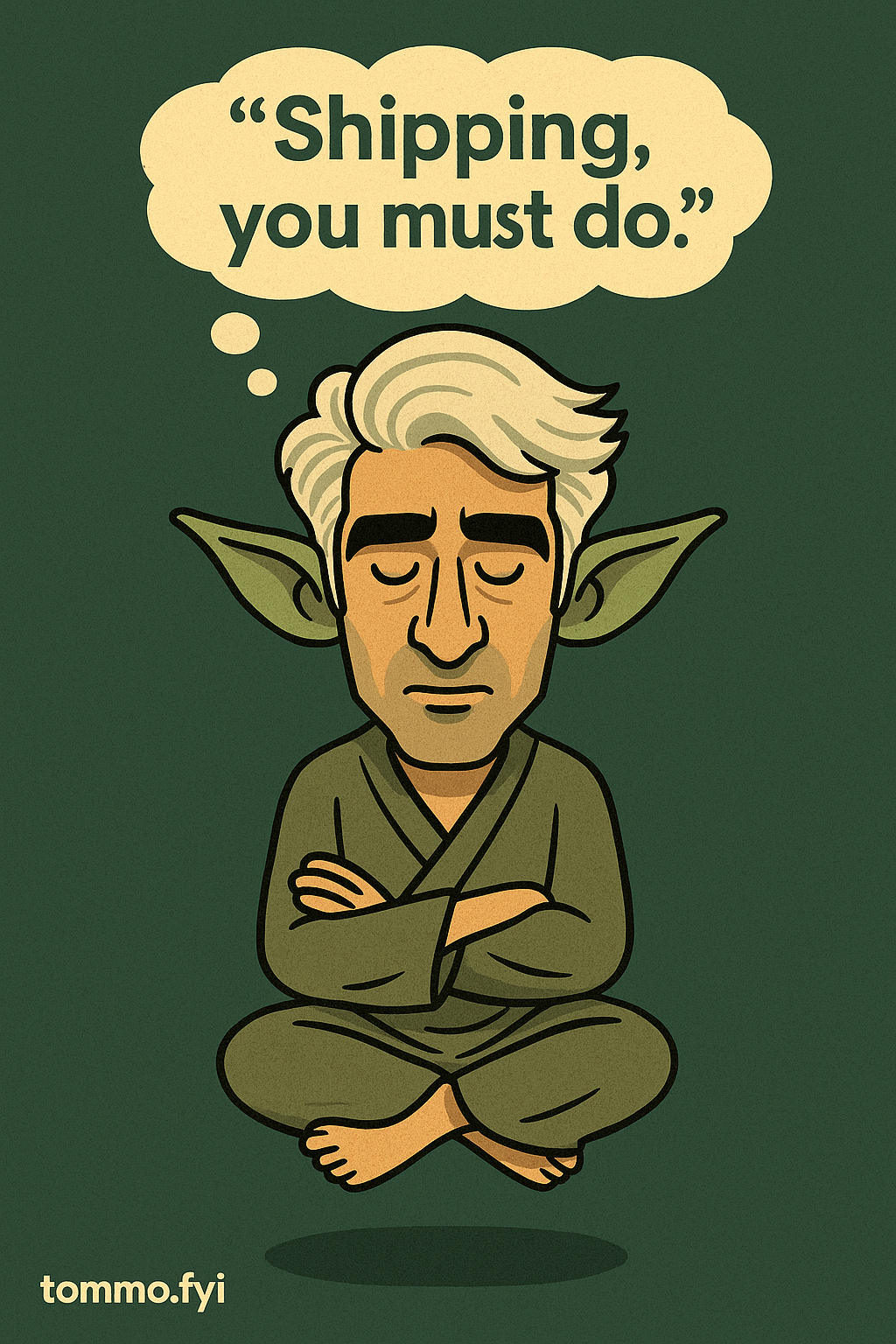
And when the queue gets too long, people leave.
There’s a reason the world’s best AI engineers now walk out of Infinite Loop and into places like Anthropic, Meta, and DeepMind. Those firms offer something Apple no longer can: agency.
- The ability to fail publicly, fix quickly, and ship freely.
- That used to be Apple’s brand.
None of this makes Apple an uncreative company. It makes it a cautious one — a company whose instincts for protection have overtaken its appetite for discovery. And that’s not a terminal flaw, but it is a cultural paradox:
Section 3 — The Culture That Built the Silicon
Before Apple Silicon became a miracle of engineering, it was almost an orphan.
By 2018, the project was halfway to the scrap heap — a victim of budget scepticism from then-CFO Luca Maestri, who reportedly questioned whether Apple really needed to fund another round of custom chip expansion. “Can’t we just buy cheaper chips?” was, by more than one account, the sentiment floating around the finance floor.
To his credit, Tim Cook overruled the accountants. In one of the most consequential acts of conviction in his tenure, he forced through the funding. That single decision — a rare moment of unflinching belief in Apple’s engineering instincts — gave birth to the M-series, and in doing so, probably saved the company from strategic irrelevance.
It’s hard to overstate how close Apple came to missing that turn.
For years, Maestri’s penny-pinching had quietly eroded Apple’s ability to sustain large, long-term R&D programs beyond its minimal comfort zone. Teams were run lean. Talent churned because the infrastructure for vision was constantly costed down to quarterly returns. It was déjà vu from the late 2000s, when Apple was rich in cash but poor in confidence.
Jobs understood that innovation wasn’t a linear process.
It was a network effect. When he returned in 1996, Apple was in triage mode. Mac OS 9 was collapsing, Motorola’s PowerPC roadmap was running on fumes, and the company’s hardware ecosystem was bleeding relevance. Jobs’ answer wasn’t to patch the problem: it was to reinvent the foundations.
He pivoted instantly, re-tooling NeXT OS into the foundation of Mac OS X, and — crucially — ensuring that it could run on every major processor architecture then in existence: PowerPC, Intel, ARM, and even the old Silicon Graphics instruction sets. Portability was sacred. Jobs’ mantra was simple:
“never depend on a single supplier, or you’ll eventually depend on luck.”
That principle later became the invisible scaffolding for Apple Silicon. When Cook greenlit the M-series, Apple’s operating system was already quietly ARM-ready. In fact, it had been for nearly two decades — a latent dividend of Jobs’ obsessive contingency planning. The Newton, Apple’s ill-fated PDA from 1998, had been powered by ARM.
So when the time came to switch from Intel to in-house silicon, the software was already whispering: we’ve been waiting for this.
The transition that looked effortless on the surface, M1 chips dropping seamlessly into MacBooks in 2020, was only possible because of Jobs’ insistence on deep, cultural redundancy: design everything for the next crisis before the current one hits, and the foresight to remain eternally prepared for that eventuality as far back as two decades before it was needed.
It was Apple’s most successful hardware transition ever — but also its most deceptive.
Because while Apple Silicon gave Apple the power to perform miracles, it also gave the company an illusion of self-sufficiency. The interior hardware had become so capable that it began to mask the culture’s decline. Silicon became the company’s internal soul — a surrogate for imagination - masking the toxicity of the takeover of an esprit-de-corps culture to what I began to call “Apple Corporate.”
In the post-Jobs era, Apple’s hardware evolved faster than its people were allowed to.
Iteration replaced invention. Risk was treated as inefficiency.
The very platform-agnostic flexibility that once defined Apple’s philosophy was replaced by a new orthodoxy of internal perfectionism: if it can’t be done flawlessly, it shouldn’t be done at all.
That cultural shift explains much of Apple’s current paradox.
The same system that birthed the M-series chips — a design culture grounded in autonomy and fierce cross-discipline collaboration — is now fenced off behind layers of hierarchy and review. Teams that once ran experiments across multiple architectures now get funnelled through sequential project pipelines. They get bored.
They get tired of watching their AAPL stock options app not show thousands of Dollars of new profits every day. They left, or were poached. In fact, prior to Cook putting his foot down with Maestri, Apple Silicon itself was haemorrhaging talent to new chip startups on the cusp of what we can now see was the start of the AI GPU design revolution. Apple top silicon designers kept quitting almost as fast as they were hired.
Only when Apple decided on the importance of owning the stack, of controlling its own destiny, and Cook putting his foot down for one, and forced proper spending on Silicon, did the project flourish, and just look at the results.
Now, quickly, imagine this as an allegory for what’s happening in the AI space, the arguments about it, and the talent retention problem. Is this sounding familiar yet? Do the Apple faithful really want Apple Intelligence to be a rented back end from Anthropic of someone else?
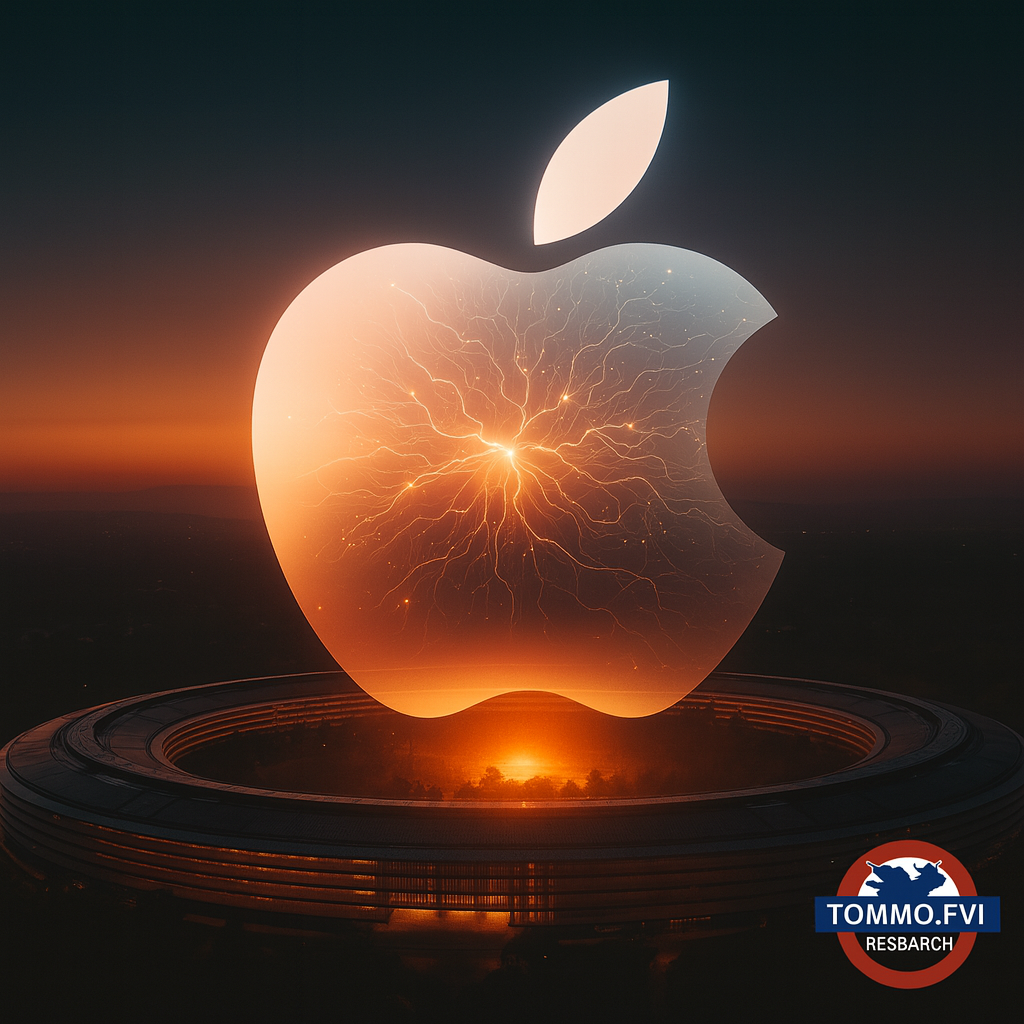
And for those who say Apple Silicon uniquely positions Apple to run an LLM “on device.”
You’re wrong. Competing processors may not be as efficient, but they’re almost as powerful, within about 20%. Given Apple Intelligence can run on anything from an A16 and an M1 to the latest M5 processors, do you really think every other mobile manufacturer won’t be able to compete with Apple’s on-device LLM (or “answering machine”).
Furthermore on-device LLMs from most of the larger AI houses already exist. OpenAI has released an open-source version of GPT, for example, and the next generation of the Nothing Phone, and Google’s Pixel and Samsung’s phones will have this feature, likely before Apple, thanks to Gemini’s success and development. Apple is not ahead of the curve, just because of Silicon, it is not behind thanks to Silicon, in phone shipments. It is way behind, in any form of self-sufficiency and therefor design independence, when it comes to building out its own AI-dependent plans.
Do you still think Apple Silicon is the saviour for “Apple Intelligence” on device?
If you do, I have some sand to sell you, to build sandcastles in Nevada.
Back to the future of Jobs approach: Where Jobs encouraged multiple prototypes running in parallel, Cook’s Apple prefers a single sequential experiment, executed efficiently but unimaginatively.
And the results show.
If Apple Silicon gave the company five extra years of narrative fuel, it also became the reason Apple stopped building new products. Had culture and silicon evolved together hand in hand, as they used to, the Apple of 2025 might already have been running:
- Modem-equipped MacBooks sold on airtime contracts.
- AR glasses launched in 2018 at a $499 entry point — not $3,500 ski goggles searching for a use case in 2024.

- A functional Siri, not an unworkable relic bolted to “Apple Intelligence.”

- HomeKit and AI ecosystems that talked to each other, not past each other, and not squandering a 10 year lead, which at the time was attached to then-grand plans of ensuring Siri and HomeKit (as it was then called) were so integrated and powerful that Apple Home would be the defacto standard for home automation and control.
- Apple AI and Siri 2.0 would by now running not just your car on CarPlay, but your house, your TV, and everything else you could connect it to. Unfortunately through over-charging and a lack of resources and imagination, Apple Home’s plans have advanced as far as… allegedly include a rumoured new HomePod with a screen on an arm to it.
Is that in homage to Ive’s iconic iMac flatscreen on metal arm, or just a lack of imagination? Personally, I have enough old iPads lying around not to need one attached to a HomePod. This sound like another Frankenstein creation created by a marketing department which needs its budget halved, and the money reallocated to engineering and product design talent.
So while the silicon increasingly rose to the challenge, the culture which needed it, slowly calcified into inaction.
And that’s the real story: Apple’s technical architecture kept running on Jobs’ 1996 firmware, while its cultural one fell out of sync.
If Jobs built an Apple that could survive any processor, Cook built one that can survive any quarter. But the future will demand more than quarterly optimisation — it will demand the return of the creative redundancy that once defined Apple’s magic.
- Silicon without culture is just physics.
- Culture without silicon is just philosophy.
Only when they run in parallel — like code and clock speed — does Apple become what it once was:
“a whole fruit, not just purée.”
Section 4 — The Hardware That Now Limits the Culture
In 2020, Apple Silicon delivered exactly what Apple needed most — a miracle.
The M1 chip arrived not just as a processor, but as a resurrection story. Overnight, Apple became the envy of the semiconductor industry. Intel was humiliated. Reviewers reached for biblical metaphors. Performance per watt was so far ahead of the field it felt like a cheat code.
For decades, Apple’s progress had been cultural first, technical second. The breakthroughs — the Mac, the iPod, the iPhone — weren’t achievements of efficiency, but of daring. They were acts of rebellion against technical constraint. The iPhone was so Alpha at launch when Steve Jobs did his public demo in 2007 on stage, live, it almost went belly up but Jobs, luckily, had prepared a “golden path” backup of live pre-ordered sequences against just such an occurrence, and the launch went off with nobody the wiser. iOS was, though, bolted together like a lego set. That didn’t stop him shipping on time, a delivering on time though. He knew how to balance risk reward, and better still, he knew his engineers were so thrilled to be pushed beyond their limits to deliver his dreams they would work 24/7 not to make sure “it just works” but to make sure more importantly “it just launched.”
Apple Silicon reversed that hierarchy. Suddenly, Apple’s miracle wasn’t its mindset, but its manufacturing. Its biggest competitive moat wasn’t “Think Different,” but “Run Cooler.”
That shift matters. Because the M-series chips are now doing what Apple’s creative culture used to do: carrying the company’s narrative on their own.
Each autumn’s keynote has become a ritual of incrementalism:
- “The fastest chip we’ve ever made.”
- “The most advanced neural engine ever built.”
- “More power, less energy.”
The language of revolution has been replaced by the language of specification. - Titanium [or aluminium depending on the year] is the material of the future
In other words, same music, same plateau, just a small rise in elevation. That’s not mountaineering, it’s gym floor climbing wall
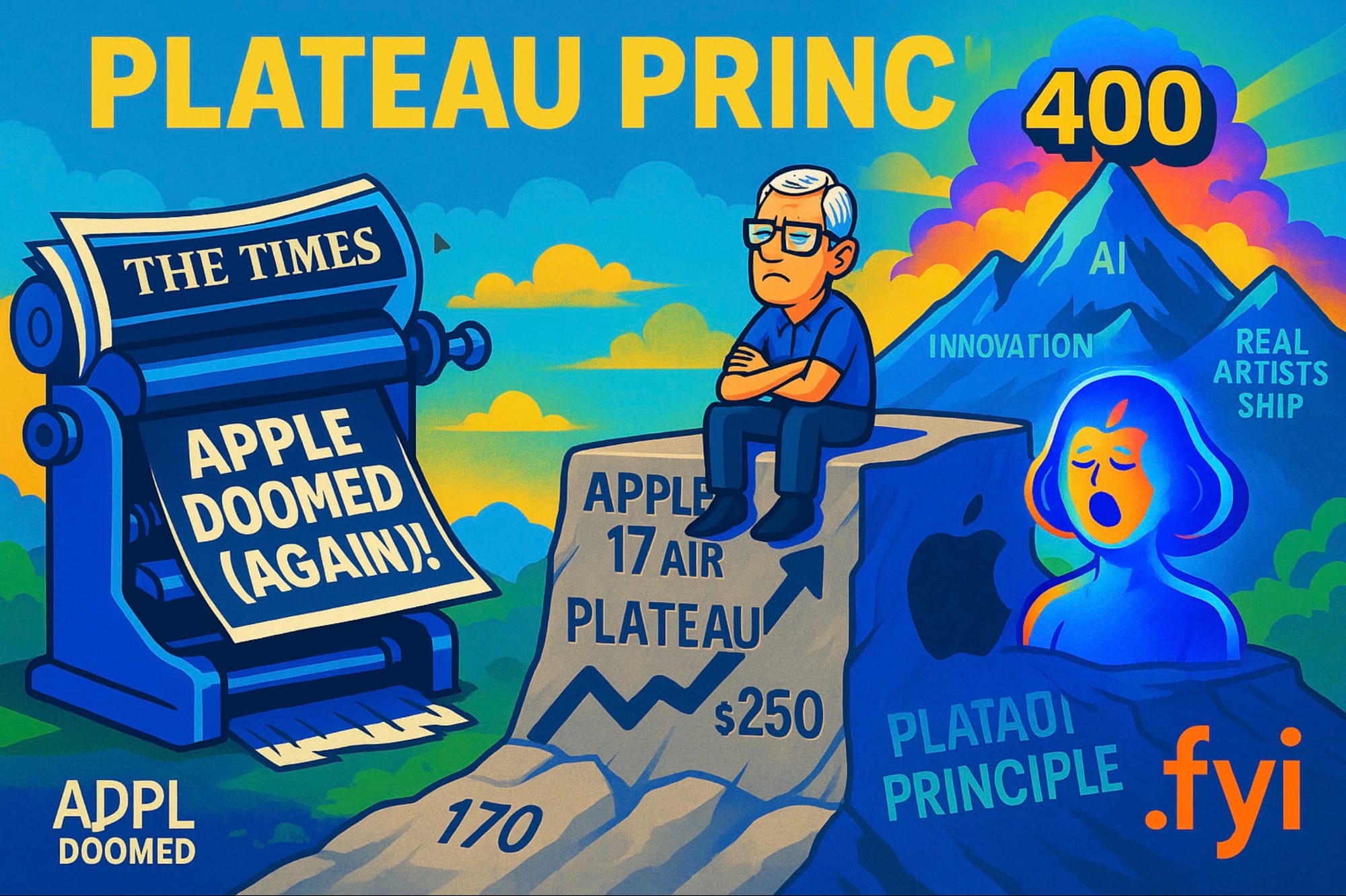
And make no mistake — Apple Silicon is extraordinary. It’s just not enough.
Every generation of M-chip deepens Apple’s performance lead, but also its cultural dependency on hardware heroics to mask stagnation elsewhere. The chip team is still operating on Jobs-era autonomy: cross-disciplinary, relentless, insulated from middle management. But the rest of Apple’s product ecosystem doesn’t enjoy the same latitude.
In effect, Apple Silicon became the last pirate ship sailing under the old flag, while the rest of the fleet turned corporate.
It’s no coincidence that the company’s most troubled products — Siri, Vision Pro, the mythical Apple Car, AI — were the ones most dependent on cultural collaboration, not raw compute power.
- You can’t solve culture with silicon.
- You can only amplify whatever culture you already have.
Siri’s tragedy illustrates the point. The world’s first “agentic assistant” should have been Apple’s defining contribution to AI. Instead, it became a cautionary tale in corporate decay.

Three rewrites later, engineers were still calling the codebase “unworkable.” Teams tasked with bolting “Apple Intelligence” onto it last year reportedly found layers of unmaintainable legacy logic — the digital equivalent of a haunted house. The talent arrived. Then, the talent didn’t just leave; it escaped, and not just for the salaries, but for the opportunity to try and find somewhere to thrive and shine even though, as we know, the culture at Meta and Google have challenges of their own.
That’s not a failure of compute. It’s a failure of conviction — the human kind. The same Apple that once rewrote its entire operating system in two years couldn’t refactor its own agentic assistant in fifteen. The difference wasn’t technical complexity but a lack of cultural permission.
As I mentioned earlier when Steve Jobs faced an existential crisis on his return with NeXT OS to replace the dying Mac OS 9 — he didn’t add a patch. He nuked the entire thing and rebuilt from scratch, dragging NeXT OS into the spotlight and forcing the company to evolve with it. That was the birth of OS X, and the rebirth of Apple.
Today’s Apple would hold a meeting about “whether users are ready for that kind of transition.”
It would probably conduct six rounds of testing, establish a cross-functional steering committee, and spend three years debating the margins of the icons. And then drop the entire idea, in case there was a risk of making a mistake.
In the short term, the obsession with control and risk-aversion keeps Apple’s products polished and predictable. In the long term, it keeps them polished and predictable.
It keeps them “plateauing,” while it tries to reconstruct its teams and culture by peeling bits off, and trying to stick them back together like Lego bricks, as if culture was as easy as building a printed circuit board.
The true irony is that Apple Silicon’s success has insulated the company from its own creative consequences. The hardware is now so capable that it forgives cultural hesitation.
The chip compensates for the culture. You can’t feel the drag when the engine’s this strong. And that’s why Apple’s trajectory today looks smooth from a distance but static up close, the euphoria over a 15% rise, we’re told to expect, in iPhone 17 sales being a victory, when that’s just compensation for two years of failure following the iPhone 16 launch. Smoothing out the graph, that’s really. More of a 6-7% increase in sales YoY, well under par, and nothing to celebrate.
Apple’s orbit is stable but its gravity is gone and it can’t keep its key personnel - the ones in the department it most needs to underpin its new products, many of which have been held up for years due to cultural calcification, to launch. One look at the developers’ headband of the AVP, which allows it to be connected by cable to a Mac for development, shows how old the engineering is in this product - it only runs on USB 2.0! That speaks volumes of just how far back the engineering behind this EOL’d device is, and how even now, Apple is keeping it on life support for appearances sake, just dropping a new processor into a now-ridiculed form factor and selling it for the same price as before.
That’s not culture. That’s political revisionism, calling a cultural failure of “spatial computing” a new era of “spatial sports consumption” (sometime in 2026 if you’re lucky, when their Formula One US rights start streaming F1 in the US via AppleTV).
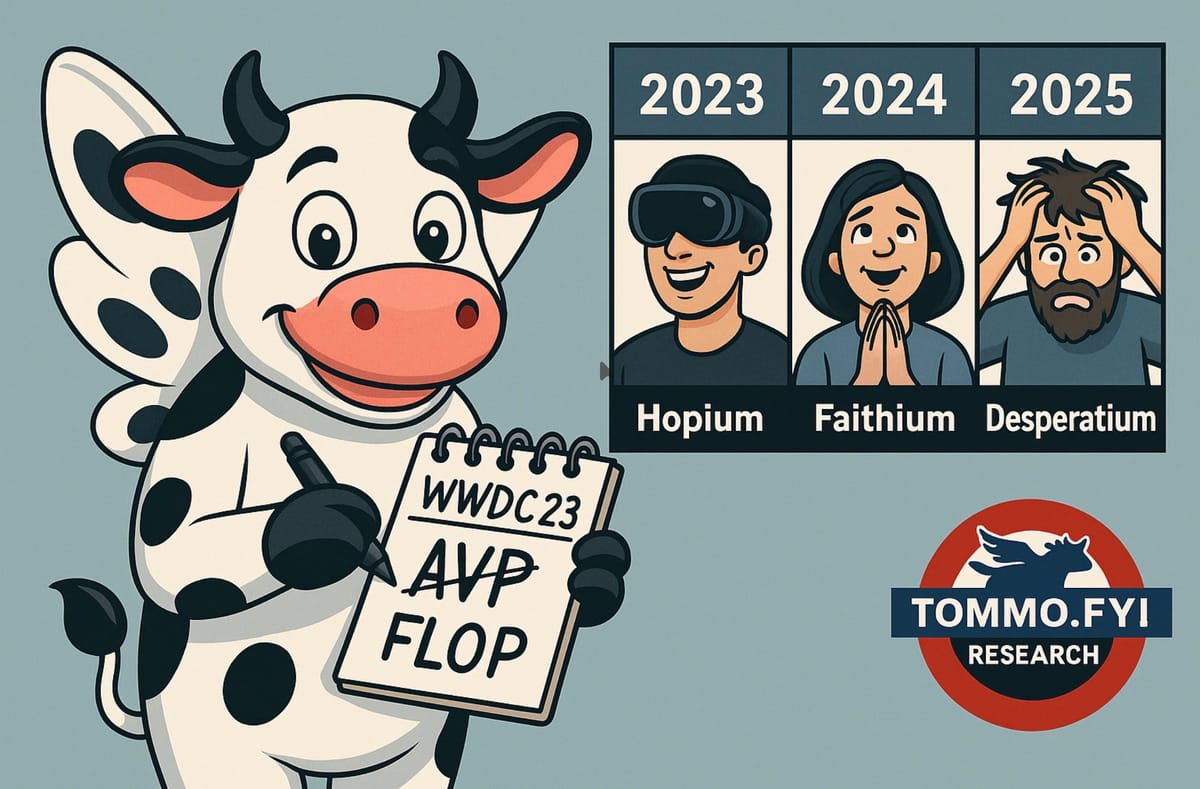
The AVP 1.5 2025 edition: same price, same design, new chip, still no use case. RIP.
When you strip away the gloss, the symptoms are visible everywhere:
- Siri has become a punchline.
- HomeKit feels abandoned.
- Vision Pro, the company’s most ambitious product in a decade, arrived with no clear purpose — an immaculate orphan of indecision and has been rolled out in a wheelchair with a new CPU but with nothing to use it for yet, just to keep the VisionOS alive
- AI integration is being treated not as a design revolution but a compliance exercise, and written down to a “never mind” narrative, after being last year’s driver for Dan Ive’s November 2024 prediction of AAPL to $325 shortly before in April it collapsed to $167
If you really think AI is just a new Google, all I can say to you is you must have a butler bring you your morning tea, and one to answer your telephone for you and a secretary to write all your letters for you, because in the real world, corporate culture is being forced to embrace AI at every level, right now, and on a personal level, GPT is now the most ubiquitous app outside of TikTok and Instagram to ever launch with almost one billion installed users already, and by the end of 2026, will outstrip Apple’s much vaunted installed users bae of 1.5 billion iPhones.

When a device is classed as a software agentic layer, at what point does the hardware installed base it runs on, cease to be as important?
News for AAPL investors: GPT and Perplexity sit on top of those iPhones, happily, and nothing will switch users to Apple AI if it isn’t connected to their cross platform and personal projects within their GPT environments. If that means nothing to you, then you don’t understand agentic OS or agentic browsing and I have a reading suggestion for you:

Agentic AI: Safari isn’t welcome to the party, runs on top of iOS, MacOS and iPadOS
“It’s not that Apple can’t build things. It’s that Apple now builds only the things it can guarantee will work — which is the exact opposite of innovation.”
For a company that used to ship chaos and then turn it into elegance, this inversion is lethal.
Real artists ship. But first, they dare to draw something messy. Just look at Picasso.
If Apple’s next great product isn’t physical, but cultural, then this is its roadmap moment: the equivalent of 2005’s decision to move from PowerPC to Intel — only this time, the architecture isn’t hardware, it’s mindset. The bottleneck at Apple today isn’t in its transistors. It’s in its tolerance for imperfection, and a corporate culture which causes a recoil in career conscious and ambitious young engineers for whom the ancient hierarchical culture in which Apple operates internally quickly becomes simply intolerable.
That’s the new “thermal envelope.” which is throttling the company’s creative clock speed.
Section 5 — The Culture Stack — Apple’s Untapped Product
Here’s the thing about Apple: every time it looks cornered, it’s not the hardware that saves it but the architecture behind the hardware.
- In 1997, that was Jobs’ cultural reboot: pirates, not process.
- In 2020, it was Cook’s gamble on Apple Silicon: autonomy, not dependency.
- And in 2025, it can be both — if Apple finally realises that its next big product isn’t a device, but a development environment for people.
Subscribe for free by accepting early Founder Member access to this tier — and early beta access the moment it goes live.
Culture can be engineered just as precisely as silicon. That’s why company’s have “People & Culture Directors” instead of simply “HR Departments” these days.
Culture can have structure, function, and interoperability. You can optimise for curiosity, parallelism, and latency of decision-making. The same way chip designers think in pipelines and cache efficiency, leaders can think in creative bandwidth and execution throughput.
That’s Apple’s missing stack — and its most lucrative one.
If the M-series chips proved anything, it’s that ownership of the full stack isn’t a vanity project; it’s a survival strategy. When you own the vertical, you own the tempo. When you outsource it, you rent your destiny.
What the company once achieved through cross-disciplinary collaboration has been replaced by vertical silos of immaculate process. Engineers don’t stumble into designers at 2 a.m. over pizza any more; they book meetings through “AppleConnect.” Creativity has an appointment slot. And with departments and teams rotated and reorganised every few months like a neverending game of musical chairs on a merry-go-round, people are sick, dizzy, and just want to get off.
Reversing that doesn’t require another Jobs — it requires another cultural architecture review.
One that treats the internal environment with the same obsession Apple gives to transistor density. The question shouldn’t be “What’s the next iPhone?” but “What’s the M1-equivalent for our organisation?” What’s the system-on-a-culture that can run faster, cooler, and freer, and pave the way for ever increasingly clever neural engine deep intelligent cultural change?
If Apple gets that right, if it reinvents not its products but its process for producing them, then my long-standing thesis holds: AAPL can hit $400 by Q4 2027.
Not by magic, but by math, which I explained here in my article examining why, months ago during an internal struggle to solve their AI apocalypse serious talk was going on about acquiring Perplexity, but could still be replaced by an equally ambitious and daring strategic move.

One of a four part series on Perplexity, Apple, and How AAPL could reach $400 by Q4 2027
Because the fundamentals for that trajectory are already there:
- Installed Base Monetisation: Services revenue per user up 20% since 2021, with untapped room in health, payments, and entertainment.
- Increased GM’s from Services: Coming from the enormous upselling and focus on Apple Financial Services and high margin AppleCare products (the new iPod).
- Silicon Margin Leverage: Every M-chip generation lowers COGS across multiple product lines, widening gross margin by 30-40 bps per cycle.
- Platform Efficiency: AI integration across iOS and macOS will generate incremental ARPU growth even without hardware volume gains.
- Buybacks: At the current cadence, Apple can retire 5-6% of float annually, mechanically lifting EPS. Not ideal for top line growth, but works as a stock driver by pure market mechanics.
“At a conservative 12–14% annualised EPS growth rate, a modest P/E re-rating to 32× (well below today’s 42× multiple) still delivers $400 by late 2027.”
The market doesn’t need Apple to become the next NVIDIA; it just needs Apple to believe in itself again. To remember that the real competitive advantage isn’t its silicon — it’s its speed of belief. The irony is that Wall Street keeps misreading Apple’s future the same way Apple misreads its past.
Analysts focus on whether iPhone unit sales are up 15% year-on-year — a meaningless metric when you’re comparing against one of the weakest cycles in memory. They should be asking, whether Apple is rebuilding the kind of internal ecosystem that once made iteration feel like invention and people skipped anniversary dinners to watch a keynote, excited at the prospect of a “One More Thing” announcement being more than a new Genmoji, or orange replacing black as the new flagship colour of its new iPhone 17 Pro range.
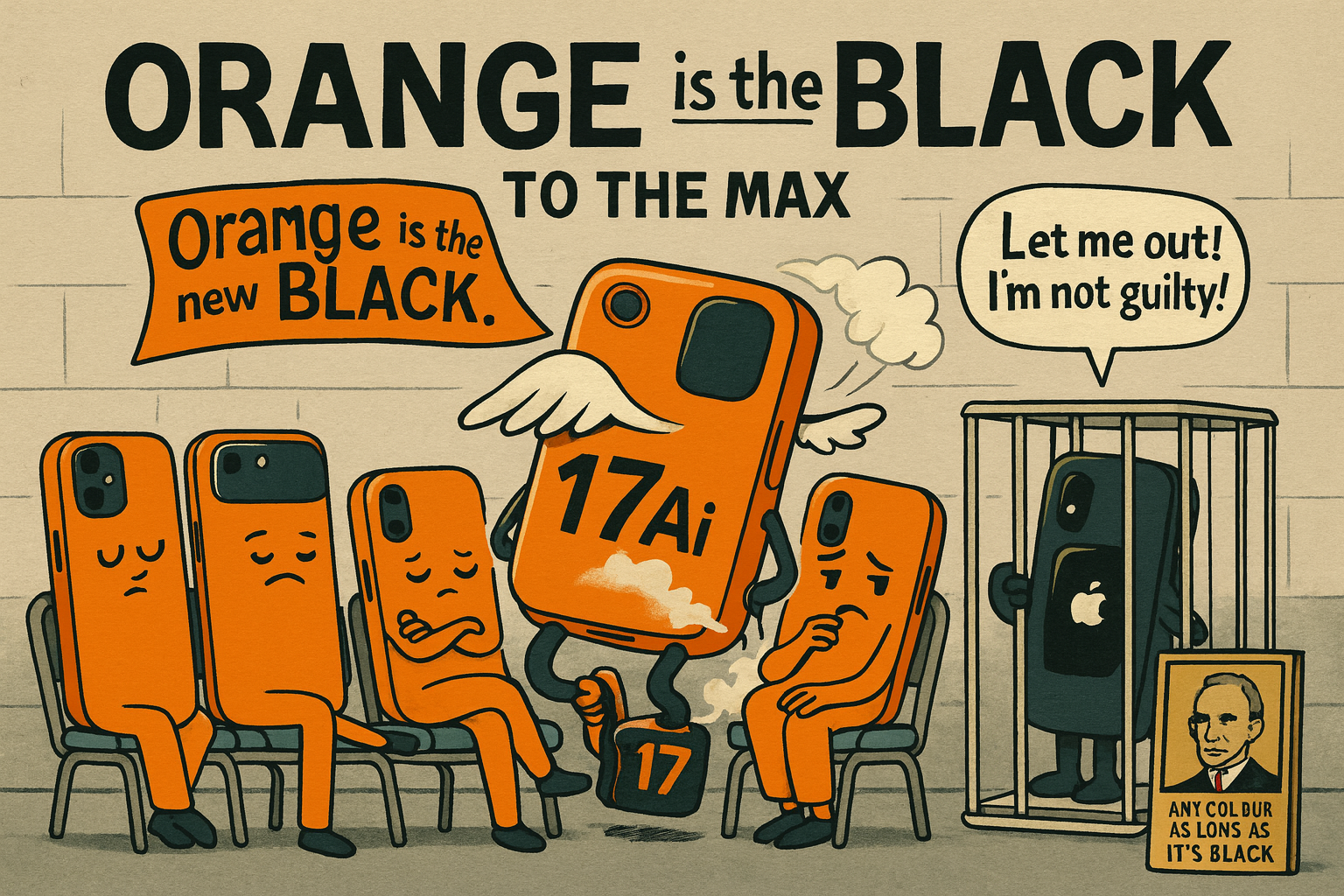
If Apple re-learns how to ship culture the way it ships chips, the rest follows.
When that happens — and it can — the share price will merely be a lagging indicator of something far more valuable: confidence.
That’s what $400 really represents. Not hype, not hopium — alignment.
Between product and purpose. Between silicon and soul. Unifying Silicon with Culture, once more and re-creating an Apple greater than what is current the sum of its two parts, currently suffering from a partial lobotomy.
And for investors who’ve forgotten how fast Apple can move once it remembers who it is, the next two years could be a masterclass in déjà vu.
Just like 1996, when Apple brought Jobs back in from the cold to take every the company and save it from its own degradation, evolutions at Apple never start in the lab. They start in the mirror, because if you don’t learn from history, as Apple did in 1996 by restoring its past genius for its future success, then you don’t have a future, you just have iterative complacency, and that’s not culture but an echo of where all tech companies used to end up: jumping the shark at Sea World in Orlando.
Section 6 - The MANGO Moment — Keeping Apple’s Bite
Once upon a time, FAANG was the market’s magic word — the shorthand for dominance.
- Apple
- Amazon
- Netflix
- Google.
But as Axios observed in its recent article, the acronym no longer fits the world it tried to describe. The frontier has shifted from social networks to generative systems, from e-commerce to cognition. And so, the Axios coined a new fruit:
MANGO.
- Microsoft
- Apple
- NVIDIA
- OpenAI.
To stay part of that new pantheon, Apple has to evolve from the A in FAANG (the consumer hardware anchor) into another “A” in MANGO: a platform company fluent in intelligence, agency, and cultural velocity. And voilá we have…
“MAANGO!”
Apple must move from shipping devices that run intelligence, to cultivating experiences that embody it, with its own intelligence, backed up by a new, living, buzzing, thriving internal culture to rhyme to the heartbeat from Apple Silicon.
Axios got one thing exactly right: MANGO isn’t about products but momentum.
Every company in that acronym shares one trait — a willingness to cannibalise itself before anyone else can. NVIDIA reinvented its GPU pipeline into an AI empire. Microsoft gutted its own software model to fuse with OpenAI. Google, however clumsily, is doing surgery on its own search engine mid-flight. Apple used to do this, when it moved from iPod to iPhone, added the iPad to the MacBook line. These days, Apple won’t even dare put a modem in a MacBook and hasn’t for a decade, for fear of cannibalising iPad sales. It’s lost its risk appetite. Apple under Jobs thrived on it and so, funnily enough does Eddie Cue, probably the only tru maverick thinker left at Apple rather than just a “smooth operator.”
Apple’s version of this reckoning is cultural, and looking ahead it choice for succession of CEO will dictate whether Apple becomes doomed or safely iterate its way to buyback heaven, or sprout hydrofoils and suddenly become a supertanker with the speed and mobility of a speedboat.
Its “chip” moment has already happened; its “cognition” moment is overdue.
If it can re-engineer its internal architecture, unfreezing the creative stack that made the M-series possible and spreading that esprit-de-corps back throughout the company to replace its corporate culture, then Apple won’t just remain in MAANGO, it will redefine it. With FANGS of its own.
In my opinion, what keeps Apple extraordinary has never been just its hardware, but its habit of building hardware as metaphor for delighting the world Lilly a ring master at a circus.
- The iPod was about control in a chaotic world.
- The iPhone was about connection in a fragmented one.
- Apple Silicon was about independence in a dependent one.
Now the next product — invisible yet priceless — is about Apple’s own internal culture in a constrained one.
Re-fusing its hardware discipline with its human daring would make Apple unstoppable again. It would restore the loop that Jobs designed and Cook preserved — the recursive cycle where design, engineering, and imagination all run on the same bus.
And that’s how Apple graduates from the A in FAANG — safe, steady, profitable — to the A in MAANGO, which (if you don’t mind, Axios), I’ll redefine from being a market acronym to a cultural one:
- Modular.
- Agentic.
- Adaptive.
- Neural.
- Global.
- Original.
If Apple can get this right, it won’t just be catching up to the AI age but once again be defining the interface that makes it human. That’s the opportunity in front of it, recapturing its heritage and origins, redefining its canonical and Human Interface Guidelines which impacted and influenced decades of UI and UX design,
Apple doesn’t need another iPhone, or an AVP, but another identity because although it will always be an Apple, it needs to learn that Apples are not the only fruit, and maybe, crossbreeding with a mango, might be the sweetest reward. Free of the legacy of being a FAANG, maybe AAPL can thrive in the MAANGO grove?
Criticism isn’t cynicism. It’s care for what Apple once did best: surprise us.
Don’t forget to stay up-to-date and register for the new Intraday Dashboard feature and companion app, only available to subscribers (free) and newsletter subscribers. 👉 Check your settings below, and subscribe if you haven’t yet for early access to Intraday Updates.

Click the for news about this amazing new interactive feature-set for newsletter subscribers and members only. Member but not a newsletter subscriber? Changes settings below
Turn on your Newsletter Subscription if you’re already signed-up as a member by checking your account settings here:
— Tommo_UK, London. Monday 20th October 2025.
X: @tommo_uk | Linkedin: Tommo UK
